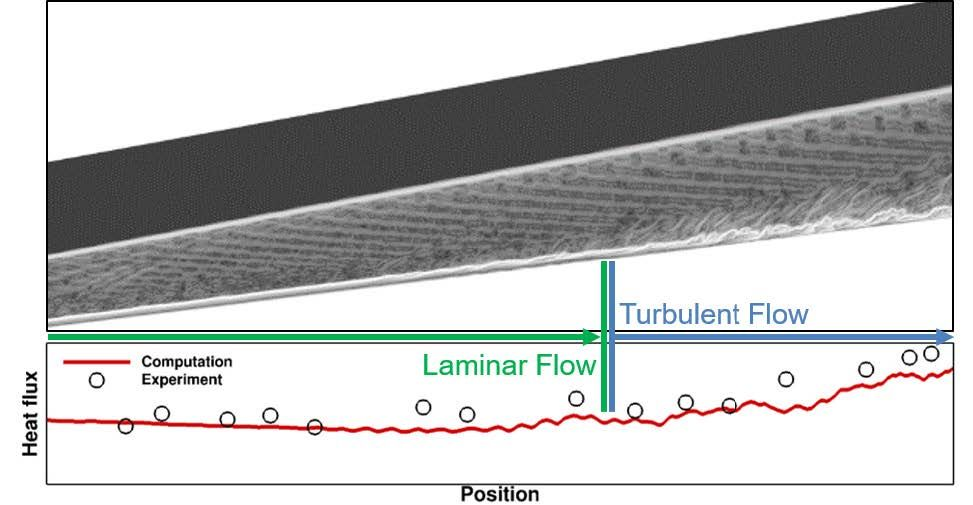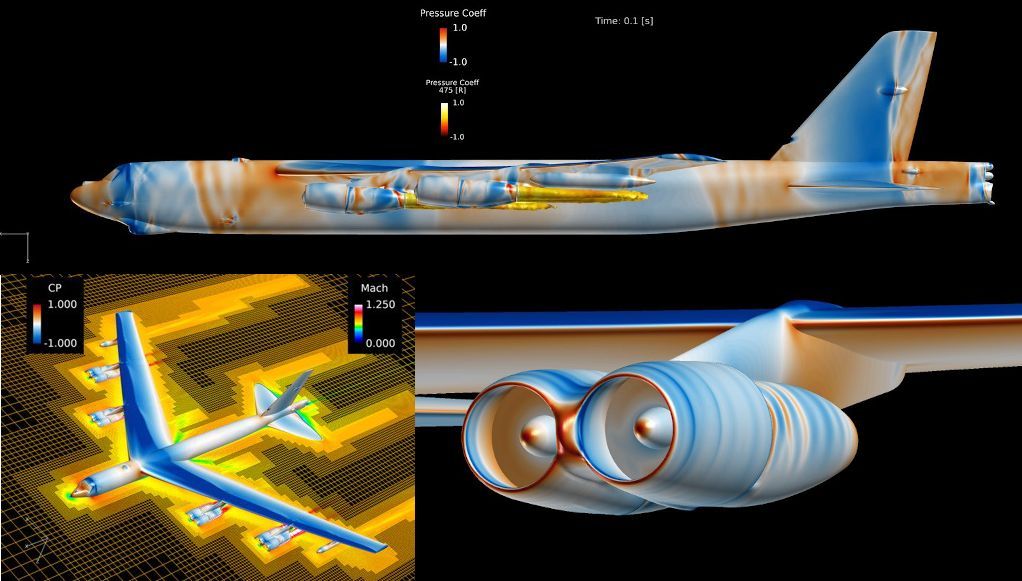Success Stories

The HPCMP had a critical role in the testing of the CH-53K King Stallion, the United States Marine Corps next-generation, heavy-lift helicopter. On December 28, 2022, the US Navy approved the aircraft for full rate production and should be deployed within the next 24 months.
The HPCMP helped Naval Air Systems Command (NAVAIR) stay on target by allocating 30 million CPU-hours on our supercomputer resources, and providing high-fidelity modeling and simulation through Helios, our CREATE rotorcraft software. This helped the design team solve a challenging exhaust gas re-ingestion problem that threatened to delay the development program.
HPC modeling allowed the project to stay on schedule and saved months of flight test costs, allowing the saved funds to be allocated to other priorities.

Wind tunnels must be able to operate quietly in order to mimic the laminar-turbulent flow transition during flight. While quiet hypersonic wind tunnels that function above Mach 6 are not currently available, the United States Department of Defense requires them to support hypersonic development programs.
An HPCMP Frontier Project helped the Air Force Research Laboratory and the Office of Naval Research use direct numerical simulation to study the acoustic noise spectrum and laminar-turbulent flow in hypersonic tunnel tests. They successfully predicted transition location and heating rates for experiments carried out in an Arnold Engineering Development Complex tunnel at Mach 8.
Better understanding of the effect of wind tunnel noise on laminar-turbulent transition will make conventional hypersonic wind tunnels more useful. It would allow engineers to extrapolate test results to flight conditions and validate reduced-order vehicle models. The effect would be a substantial savings in cost and time for DoD hypersonic development programs.

As our nation’s adversaries develop new aircraft, the US Air Force needs new target-practice drones with the same capabilities as these vehicles. The Fifth-Generation Aerial Target program requires a fleet that balances qualities like high-maneuverability and low-visibility with a high-enough quantity for their needs, all while limiting costs.
HPCMP CREATE’s Kestrel software and computing capabilities were used to create a digital model of the aircraft, including engine function, high-Mach stability, takeoff and landing dynamics, and airworthiness. This work allows for faster prototyping and limits risk during the drone’s first flight tests.

Since the B-52 Stratofortress took its first flight in 1952, the Air Force has made periodic enhancements to the plane’s design to keep the fleet in service. The Commercial Engine Replacement Program (CERP) seeks to put new engines into all B-52s over the next several years.
The HPCMP had a critical role in the CERP’s engine acquisition process. Using CREATE Kestrel tools, the Air Force sought to accurately model potential B-52 engine designs and virtually “fly” the aircraft early in the acquisition process to aid their trade-space analysis.
The models allowed the Air Force to examine velocity, temperature, and pressure forces and reduce risk ahead of engine selection, integration, and flight testing. HPCMP’s contributions helped the Air Force select a manufacturer for the new engines, which will be integrated into the fleet and keep the B-52 flying.
